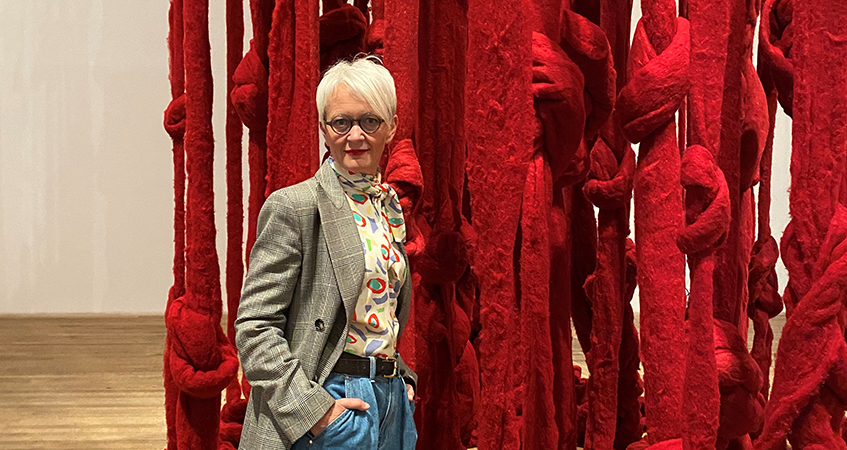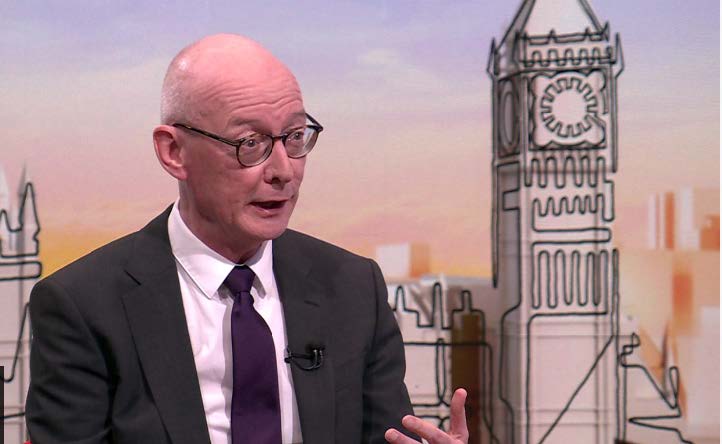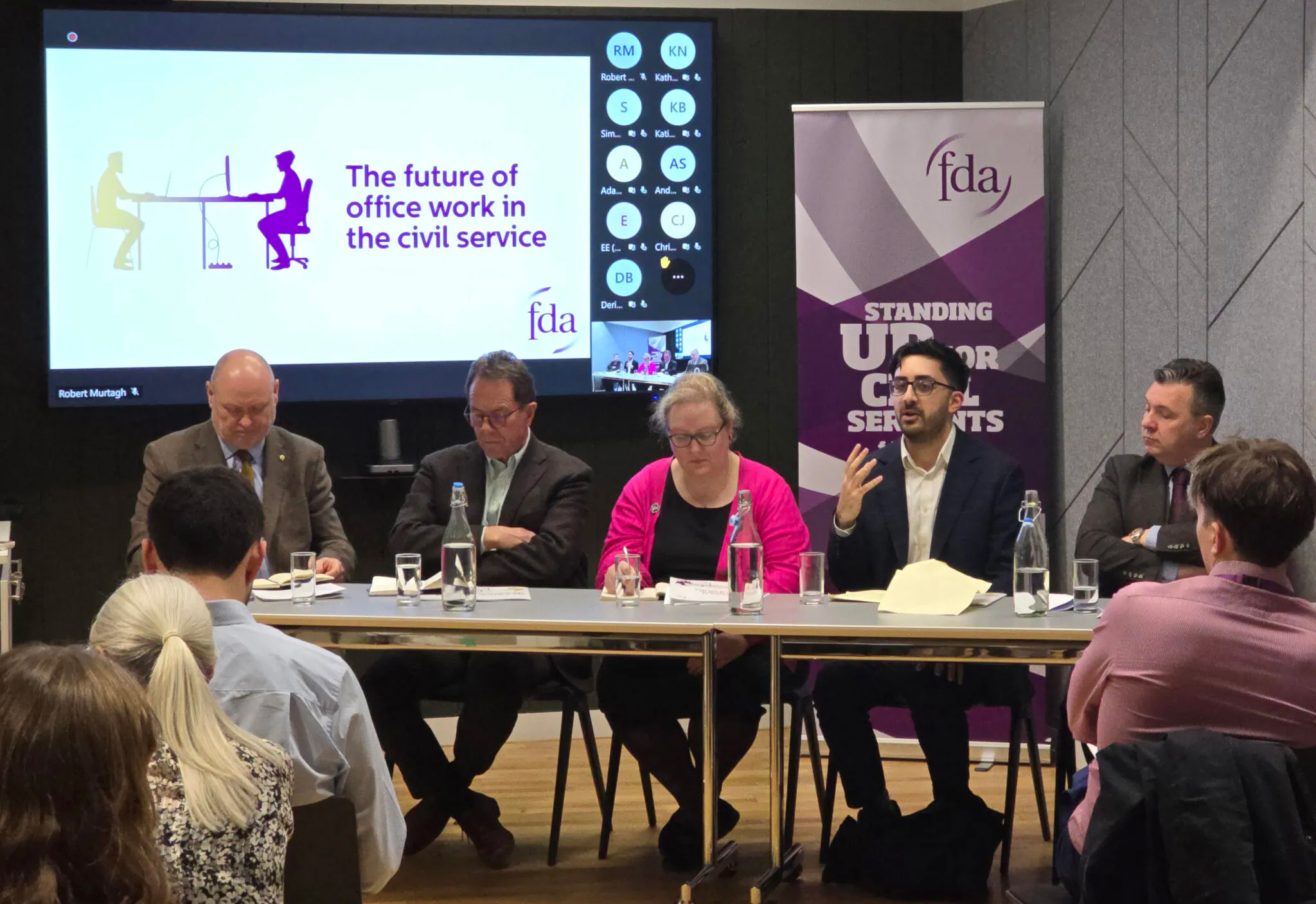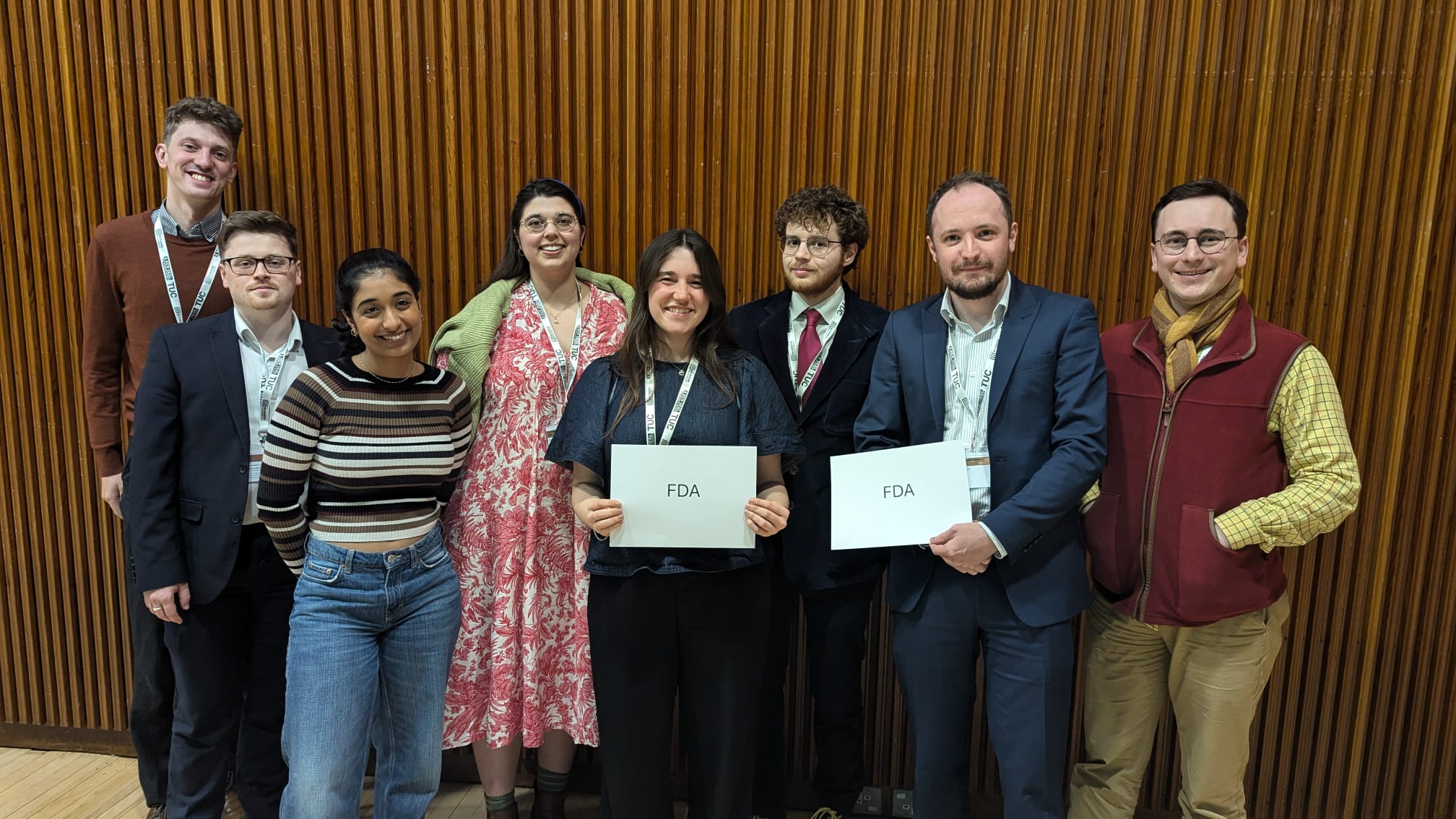“A truly national institution”

As Director, Maria Balshaw is responsible for all four Tate Galleries – Tate Modern, Tate Britain and the galleries in Liverpool and St Ives, as well as a collection covering more than five hundred years of British art, and 20th and 21st century modern and contemporary international art. Previously an academic working at the universities of Northampton and Birmingham, a “mid-career switch” saw her spend twelve years in Manchester at the Whitworth and Manchester Art galleries.
Having been at Tate since 2017, Balshaw is passionate about it being a “truly national institution”, with its collection held for the benefit of the whole British public. Tate’s geographically diverse locations give it a “real advantage”, she argues, both because the “the work that we do and share in Liverpool and St Ives is necessarily different to the work we do in London,” but also because it helps Tate better understand the “imperatives around wanting to level-up economically and culturally”.
“In Liverpool, we are very much part of the city-region discussions about the significance of culture as a driver for wellbeing, regeneration and economic growth in the north of England. Likewise, in St Ives, we understand the incredible challenges of connectedness across isolated, rural environments – in a place where there is also a huge tourist economy, so there are different poles of experience.” This, Balshaw argues, gives both her and the organisation a “sense of the challenges beyond any single location. It’s not about any single gallery or museum, it is about the cities and towns that we are in, and it’s also about thinking about the wider benefits we can bring through the arts to the British public.”
Beyond the four galleries, Balshaw also highlights that the Tate collection is found everywhere. “At the moment, there’s a show of our Diane Arbus photographs in Barnsley, there are Turner paintings on display in Dublin, there’s a David Hockney exhibition in Provence, and an Op-Art and Kinetic Art show in Shanghai, and there are individual works probably in every major regional gallery in the country.”
Culture has, Balshaw believes, been a “central driving force” in regeneration in the post-heavy industry era. Tate Liverpool, which will undergo a major refurbishment later in the year, was first created as an “act of sharing cultural wealth in the north of England” and was “one of the cornerstones” of the initial regeneration of Liverpool, which also included the city’s Garden Festival and investment in the Liverpool Philharmonic. “It was the rebuilding of the cultural sector in Liverpool which actually became the means to regenerate economically and bring jobs to the city-region. And that’s true of Manchester, Leeds, Newcastle, Bristol – in the latter part of the twentieth century and in the twenty-first, most regeneration has been culture-led.”
The COVID-19 pandemic, however, had a profound effect on the sector. Tate, Balshaw reflects, “went from having no plans about how to manage closing the museum entirely, working from home, still making sure the collections are okay, and the buildings are safe, to actually having to do it in about two and a half weeks.” It was only possible, she says, because of the “resourcefulness of the people we have, and the creativity of FDA members and all their colleagues in our museums”. The most important lesson, as far she is concerned, is that looking after your people is of crucial importance. “In the first phase of lockdown, we decided at Tate that we would give everybody in the organisation, where it was possible, three weeks’ special leave, because I realised at that point that we were going to be closed for perhaps five or six months, and actually if we didn’t have a bit of a break, we wouldn’t manage. That investment in people’s wellbeing, that has been one of our really big lessons – that’s non-negotiable in normal life as well as the pandemic period.”
There was also capacity to innovate using digital technology, with platforms such as Teams and Zoom being “a liberation” for an institution with multiple bases around the country. “Lots of meetings now continue online, because it is exactly the right way to do it, when you need to get something sorted quite fast – you need a conversation but you don’t need to take a two- and half-hour train journey, or even a forty-five-minute tube journey and walk between the London sites.” During the pandemic, Balshaw was addressing meetings of “eight or nine hundred people”, which simply would not have been possible in person. Internationally, bodies such as Tate’s acquisitions committees and research centres have moved most of their business online, and things the organisation was forced to do “through force of the pandemic, have actually enhanced the way we can be a globally connected but environmentally sensitive and sustainable organisation”.
“I think there has been a really strong renewal of people’s feelings and values about museums and galleries”
The reopening after COVID, however, was a genuinely moving experience. “I have never seen so much crying. In the best sense, people were moved to tears because they had missed being social and they had missed been together.” She reflects that even when people visit a museum or gallery on their own you are still “with other people who you don’t know. You are part of something. I think there has been a really strong renewal of people’s feelings and values about museums and galleries.”
While Balshaw does not doubt the value we attach to our cultural institutions, she points out that “we don’t invest in them in the UK in the way that some other countries choose to,” and so funding will likely always be an issue in the sector. As a result, she says, our museums and galleries have “learnt to be incredibly resourceful”. “We’re really very good at generating our own income, and I don’t regret that. I think it makes us very entrepreneurial and creative.” This reinforces her view that “we really do have to protect and invest in our own colleagues, because it is their bold ideas that will help us always do that. When you see an amazing event in the Turbine Hall focused on families making drawings like we did through the ‘Please Draw Freely’ project through the summer holidays, it feels wonderful, but it is also really hard work. It means we are asking a lot of our colleagues.” She believes strongly in compassionate leadership, and “working through empathy and kindness. Work is still stressful quite often, but we try to respond to the stresses with empathy and compassion for others”.
She is also keen to emphasise the good value she believes Tate provides for the public funding it receives. “We are always making the argument to national government and to local government about the contribution that museums make to the greater social good… Tate has roughly 30% public funding and generates the rest itself. So, I always say we are very good value for the government investment that we get”. She believes the COVID response showed they have succeeded in making that argument, as when it was most needed “the government did support us”. At the local level, she also points out that local authorities, whether in Liverpool, St Ives or other towns and cities, are keen to “protect and support their museums and galleries because they understand the value it brings to a sense of civic pride, for young people’s learning and a sense of social health”.
“Our galleries are places where children learn to walk, where people make marriage proposals, where you see your oldest friend after three years of separation because of the pandemic. They are places that people come to for special moments”
Reflecting on the central importance of our cultural institutions to many people’s lives, Balshaw quotes a colleague who had told a visiting journalist that “one of things we are proudest of at Tate Modern is the number of babies who have taken their first steps toddling down the slope of the Turbine Hall”. She adds that “our galleries are places where children learn to walk, where people make marriage proposals, where you see your oldest friend after three years of separation because of the pandemic. They are places that people come to for special moments.” During the later lockdown that followed the initial reopening, an outdoor commission by Chila Burman, featuring “an amazing neon façade” became “London’s cultural meeting point”. “A taxi driver told me I’d helped save his job as he’d still been able to give people things to see on rides around London. People met for dates, there was a marriage proposal, and every night there was a crowd of people. That was extraordinary and very special.”
“The project started seven years before the exhibition opened”
Balshaw uses Tate Modern’s recent Surrealism exhibition to highlight the immense challenges of staging big exhibitions. A global show that was developed in partnership with the Met in New York, the project “started seven years before the exhibition opened. It started with research by curators, to map out lesser known but very important aspects of Surrealist thinking and practice, because it was a set of artistic and political ideas that spread across many countries and had lots of different manifestations”. There had been significant movements in North Africa, Eastern Europe, Japan and across the Caribbean, particularly Haiti.
Then there was identifying the specific works for display, which involved collaborating with other institutions and private lenders, and working out the logistics of gathering them. “We try now to be as low carbon as possible, so bringing works together from a few European countries and then bringing them over in one go,” says Balshaw. She adds that at Tate, “we are trying to think in very creative and canny ways about how to still bring great works for the benefit of the British public but reduce our impact wherever we can”.
On top of the environmental considerations, “artworks are often awkward shapes and sizes, and very fragile, so there is a whole freight logistics element that is enormously complicated”. The Tate’s learning team then had to think about how it could be opened up to schools, so teaching packs need to be constructed. Conditions in the room where works are displayed need to be considered, “making sure each object will be stable and won’t be harmed by us showing it”. Then the Tate’s enterprises business needed to work on books, scarves, mugs and artworks that relate to the exhibition, “and that might have a lead time of two to three years”.
“It all opens on a single evening and then has a lovely long run with the public, and it’s the result of thousands and thousands of person hours – often all over the globe.”
“A new way of thinking about more than five hundred years of art”
2023 is promising to be a very busy year for Balshaw and Tate. In May, they will have completed a complete rehanging of the British Collection, “so we’ll be launching a new way of thinking about more than five hundred years of art, very much focused on telling an inclusive story of what Britain has been and what it is now”.
In the autumn, Tate Liverpool will close for refurbishment, what she calls “a major physical transformation of the building”, and she is excited about the role of the gallery in the “really bold plans about how the whole of the waterfront in Liverpool is being redeveloped”. Tate has also launched a new apprenticeship programme, a central part of its post-pandemic recovery, which Balshaw hopes will open up the profession and the sector “to young people from all sorts of backgrounds”.
Related News
-

Meaningful reform
It’s time to lead the civil service, not just the morning news round, says Dave Penman.
-

Hybrid working: Led by evidence, not headlines
Tom Nathan shares the findings and recommendations of the FDA’s recent report on ‘The future of office working in the civil service’.
-

FDA attends TUC Young Workers’ 2025
This March, an FDA delegation attended the annual TUC Young Workers’ Conference in Congress House, London.